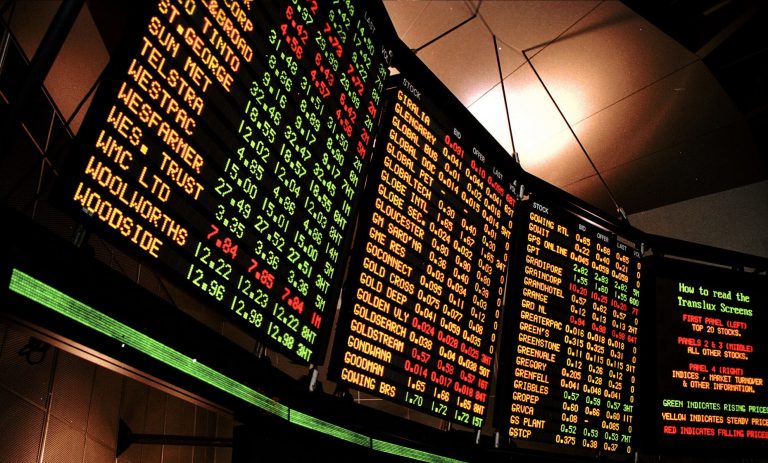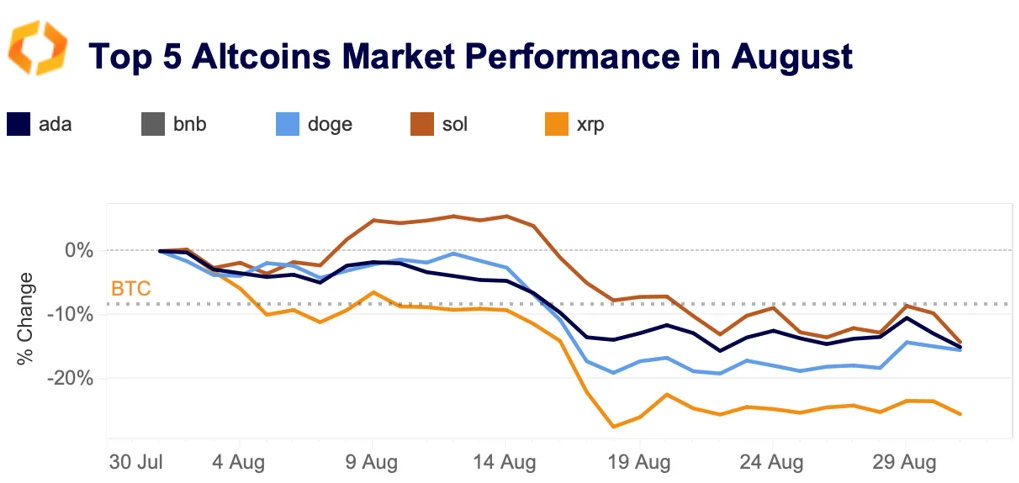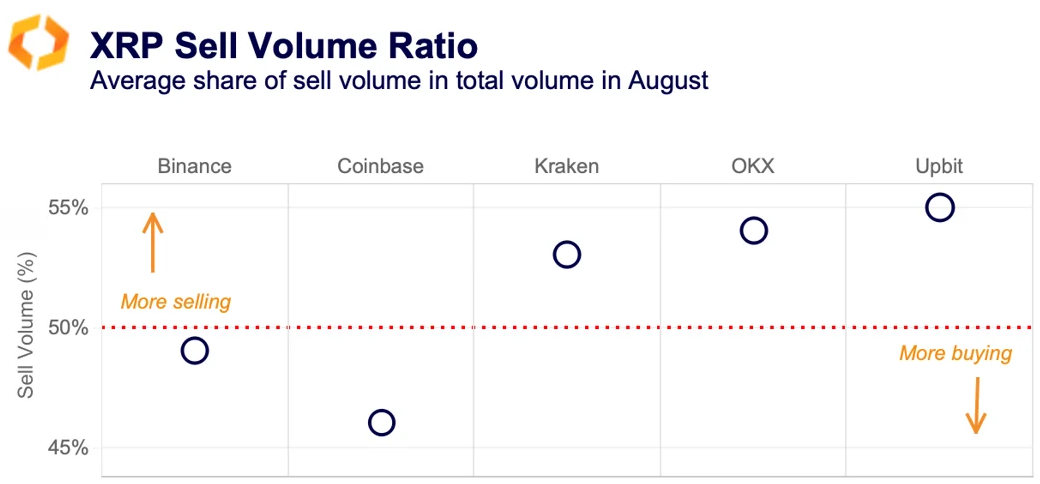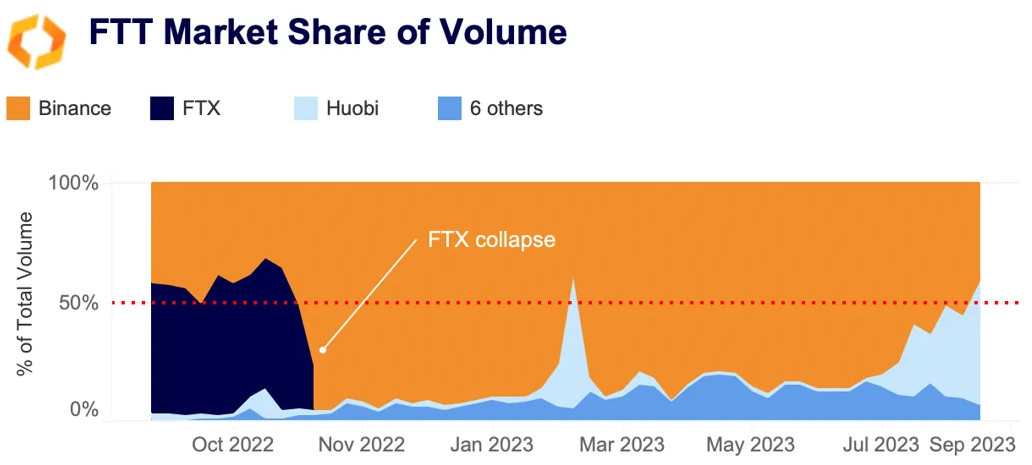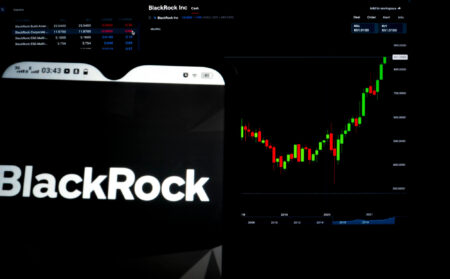A summarizing review of what has been happening at the crypto markets of the past week. A look at trending sectors, liquidity, volatility, spreads and more. The weekly report in cooperation with market data provider Kaiko.
Markets pulled back after the SEC delayed a decision on several ETFs until October. In other news, Coinbase's Base blockchain continues to see strong activity, the SEC settled with an NFT issuer, and a judge called ETH a commodity.
Bitcoin ETF news injects volatility into markets
On Tuesday, BTC briefly hit $28k following a court ruling in favor of Grayscale in its dispute with the SEC. By Friday, these gains were all but erased after the SEC announced they would delay a decision on seven ETF applications.The initial court ruling led to a flurry of buying, which we can see looking at the cumulative volume delta (CVD) on major pairs, which flipped positive with Binance showing +$50mn on its BTC-USDT pair.

The rise on Coinbase was more gradual, peaking at +$35mn about 12 hours after the ruling. Selling escalated on Thursday after the SEC delayed a decision, with the main BTC instruments on Binance flipped sharply negative. Heading into the weekend, both BTC-USDT and BTC-TUSD on Binance were approaching -$100mn while Coinbase had also flipped negative.
In a sign of just how muted trade volume has been the past few months, the Grayscale ruling was hardly able to boost BTC’s volumes. August 29 ranked just 504 out of 973 days (since the start of 2021) in terms of BTC volume. Bitcoin open interest in native units barely moved, declining moderately by 8% between August 29-31 to 237K BTC.
The move was much smaller than during the Aug 16-17 selloff, when the amount of open interest fell by 22% within two days. Overall, while price activity has spiked, trade volume and derivatives activity has been relatively muted.
XRP price analysis
XRP rallied in July after a U.S. court ruled that the token is not a security when traded on secondary markets, but it has since failed to keep its gains. XRP's price plummeted by more than 25% in August, underperforming the top altcoins as traders took profit. Despite the summer lull, XRP saw far stronger trading activity relative to other altcoins.
BIts average trade volume was $462mn last month, four times higher than the next largest altcoins by trade volume, SOL and B, which each had $128mn and $121mn, respectively. So why has XRP failed to maintain its gains? When looking at the average share of sell volume for XRP, the largest Korean exchange Upbit and OKX saw the strongest selling pressure, while buying was higher on Coinbase throughout last month.
XRP average trade size has also increased on Coinbase, surpassing all top ten altcoins. This could suggest that buying demand was driven by large traders in the U.S. as investors re-gained access to the token after the July court ruling. Overall, the share of XRP traded on U.S. markets remains lower than on offshore exchanges. XRP is only the sixth most traded altcoin in the U.S. by cumulative trade volume while it tops the list on offshore markets.
Binance tightens restrictions for Russian users
Last week, Binance tightened restrictions for Russian citizens amid reports that the U.S. DOJ is investigating whether the exchange was used to circumvent sanctions. After the start of the war in Ukraine, Binance introduced restrictions for trading on its main platform in line with Western sanctions. However, the exchange continued facilitating RUB transactions via its P2P platform including through sanctioned Russian banks.
P2P volume is not publicly available, thus it is unclear the impact of the new restrictions. However, on the main spot exchange, RUB and UAH (Ukranian Hryvnia)-denominated trade volume have both declined significantly relative to their peak in March 2022.
In 2023, RUB monthly trade volume averaged just $85mn, down from $507mn in 2021. UAH trade volume declined even more over the same period to around $10mn, down from more than $140mn. RUB-denominated trading represents only 0.2% of overall fiat volumes on the spot exchange.
AI token volumes remain flat despite buzz
Weekly trade volume for AI-affiliated tokens increased moderately in August, closing last week at around $870mn, up from a yearly low of $570mn hit at the end of July. Overall, volumes are significantly lower relative to the beginning of the year, even after the controversial launch of Worldcoin at the end of July. Worldcoin’s WLD underperformed BTC and most altcoins, registering the largest drop of more than 50% .
Decentralized machine learning platform Fetch.ai and data sharing platform Ocean have gained some traction since mid-August after launching a decentralized data exchange system designed to provide data recommendations while preserving users’ privacy. Open interest for Fetch.ai’s FET also surged by nearly 90% last month while funding rates turned positive suggesting bullish positioning.
FTT lives on
FTX’s exchange token FTT continues trading on CEXs even though its use cases are unclear after the exchange's spectacular collapse. Exchange tokens enable holders to benefit from lower transaction fees, vote on new coin listings and earn passive staking rewards. They are typically traded on their affiliated exchanges. Huobi’s HT is almost entirely traded on Huobi while more than 80% of Binance’s BNB is traded on Binance.
FTT lost most of its value after the collapse of FTX and currently trades at around $1, down from an all-time high of $74 in Sept 2021. However, in 2023, FTT trade volume in native units averaged 67mn FTT (around $109mn). So where is the token traded? Looking at the breakdown by exchange, Binance and Huobi are the two largest markets.
Huobi has gained significant market share in August, which as we noted last week raises some questions. It is notable that even prior to the FTX collapse, Binance was one of the main markets for FTT accounting for a robust 42% of overall FTT trade volumes.

